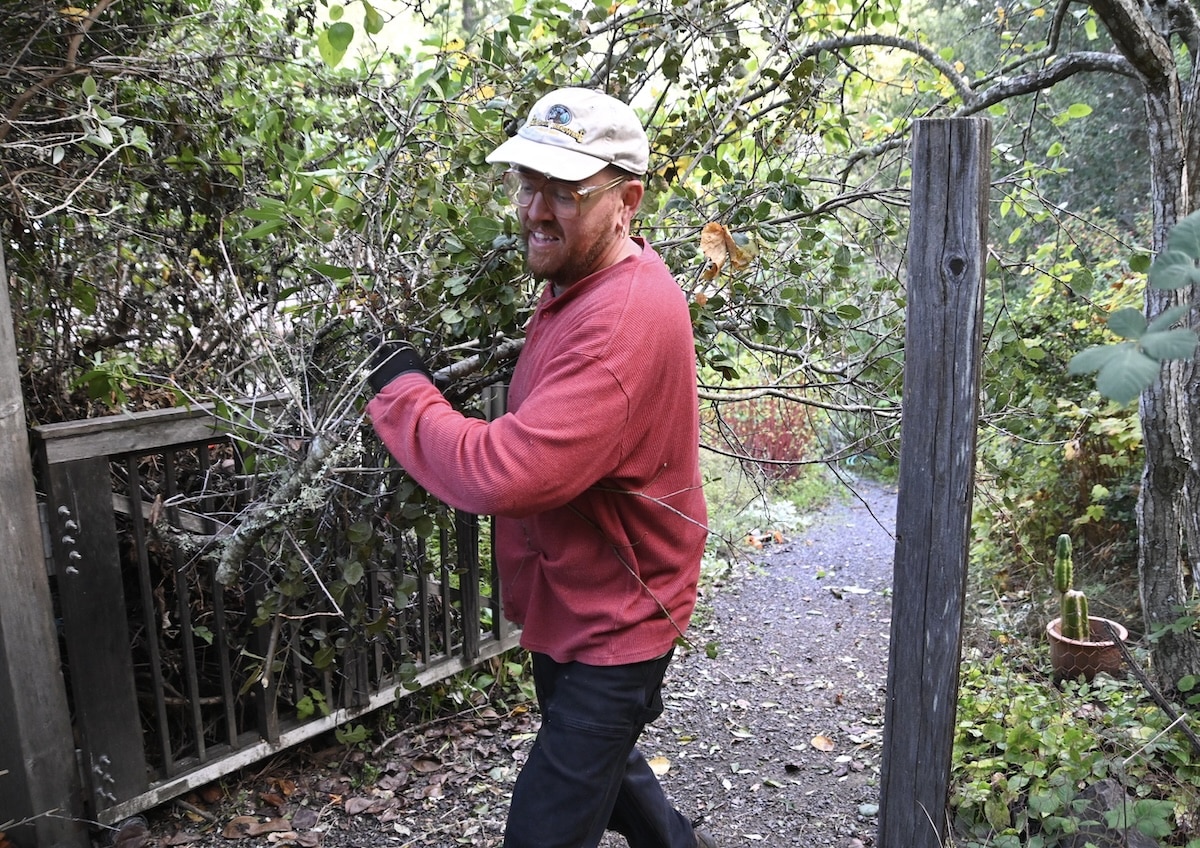Learning to live in a fire-dependent ecosystem means adapting and preparing for fire in our homes and communities, especially those of us living at the Wildland Urban Interface (WUI). While we can’t fireproof our living and working spaces, we can reduce risks by removing combustible materials around our buildings, making small safety improvements to create defensible space (a buffer around structures that improves their chance of surviving a wildfire and ember storm), and reducing fuel loads in our surrounding forests. A new UC Berkeley-led study, Fire risk to structures in California’s Wildland-Urban Interface, shows that the home hardening and defensible space strategies can decrease WUI home loss to wildfire by up to 52%.
We’ve been doing fire resilience work in the 70 acres of backcountry on our land for 30 years, strategically managing excess forest fuel loads in these wildlands, and are now applying this to the buildings on site. OAEC received funding for this work from the Safer West County Defensible Space Incentives Project, which is funded by a CAL FIRE grant. Thanks to this new grant, we’re now focusing on Zone 0 home hardening, because it’s where the greatest impact can be made.
The Incentives Project functions as a rebate program for fire clearance and offers up to $1,000 per building as reimbursement, covering up to two-thirds of project costs. At OAEC, we’re spending $22,500 on 15 buildings, which include OAEC buildings as well as those owned by Sowing Circle, the residential intentional community with whom OAEC shares our land.




Removing trees that are abutting structures.
Eligible projects can include:
- Home Hardening – Safety or infrastructure improvements within Zone 0 – the 0-5 feet around, and 10-20 feet above buildings. It’s vegetation management and fire-resistant building materials used to resist the intrusion of flames or embers projected by a wildland fire.
- Defensible Space – Cleaning up vegetation within 100 feet around buildings. This is the buffer between structures and the surrounding area.
In Zone 0 (0-5 feet of a building), OAEC staff, Sowing Circle members, and external contractors are working together to create an ember-resistant zone free of combustibles. We’re removing flammable materials (such as firewood and other stored materials) from around and underneath structures, removing vegetation (which will be replaced with gravel walkways), and trimming overhanging trees to 10-20 feet above structures. For example, below the OAEC Meeting Hall, we’re removing a small willow and three old apple trees that are very close to the building, limbing up an olive tree, and removing wood mulch (which is very flammable and can hold embers for days).
In addition to vegetation removal, our plan to prevent ember intrusion will include adding beautiful hardscaping around buildings, metal gutter guards, 1/8” metal mesh deck and vent screening, fire-resistant flashing at connection points such as where a wood deck meets a wood building, replacing wood fencing that touches buildings with non-combustible materials, and switching the upright pipes on our water mains and other critical infrastructure from plastic to metal.




Some of our hardworking crew collecting and transporting materials to be chipped on-site.
Outside of Zone 0, we’re continuing to clear dry brush, limb trees three or more feet from the ground, and remove other ladder fuels, such as small trees and shrubs that can create a ladder for fire to spread. Materials will be chipped on-site and used in the gardens or orchards. We want to refrain from putting chips back into our non-combustible zone, as they are notorious for smoldering for long periods and restarting fires.
We will ultimately share our fire resilience learnings with others through trainings here at our demonstration site, where we research and demonstrate various process-based restoration (PBR) techniques, including fire and water restoration projects.
For more information on hardening your home, check out Safer West County, some of the great videos by Fire Safe Marin, or the fire prevention agency in your area.






